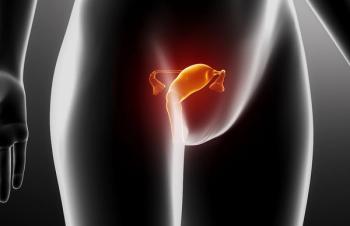
Olaparib Plus Bevacizumab Prolongs Survival in Advanced Ovarian Cancer
Adding PARP inhibitors to maintenance therapy was shown to prolong progression-free survival in patients with advanced ovarian cancer.
The addition of PARP inhibitor olaparib (Lynparza) to bevacizumab (Avastin) maintenance therapy significantly prolonged progression-free survival (PFS) in patients with advanced ovarian cancer regardless of BRCA1/2 mutation status, according to data from the randomized phase 3 PAOLA-1 trial. The trial
“It's definitely a very exciting time for those that treat ovarian cancer,” said Konstantin Zakashansky, MD, Director of Minimally Invasive Surgery, Mount Sinai Health System and Director of Gynecologic Oncology, Mount Sinai West, during an interview with CancerNetwork. “In the last couple years, we have had this explosion of new medications and different types of PARPs and different combinations.”
Also reported at the ESMO Congress 2019, the
The PAOLA-1 trial enrolled 806 patients with stage III or IV ovarian cancer who were previously treated with platinum-based chemotherapy and bevacizumab and achieved a complete or partial response. Patients were randomly assigned maintenance therapy with olaparib plus bevacizumab (n=537) or placebo plus bevacizumab (n=269). Olaparib or placebo were administered for up to 24 months and bevacizumab was administered for up to 15 months.
The
Patients with a BRCA1/2 mutation had an even greater PFS benefit: Those who received olaparib plus bevacizumab lived a median of 37.2 months progression-free compared with 21.7 months for those who received placebo plus bevacizumab (HR=0.31; 95% CI, 0.20-0.47).
Patients with a positive homologous recombination deficiency also had a greater PFS benefit: Those who received olaparib plus bevacizumab lived a median of 37.2 months progression-free compared with 17.7 months for those who received placebo plus bevacizumab (HR=0.33; 95% CI, 0.25-0.45).
The most common adverse events for the olaparib plus bevacizumab group were fatigue/asthenia (53%), nausea (53%), hypertension (46%), and anemia (41%). The most common adverse events for the placebo plus bevacizumab group were hypertension (60%), fatigue/asthenia (32%), arthralgia (24%), and nausea (22%).
The proportion of grade 3 or higher treatment-related adverse events was similar for the olaparib plus bevacizumab group (57%) and placebo plus bevacizumab group (51%). The frequency of serious adverse events was also similar between the olaparib plus bevacizumab group (31%) and placebo plus bevacizumab group (31%).
However, the olaparib plus bevacizumab group had more dose interruptions (54% vs 24%), dose reductions (41% vs 7%), and dose discontinuations (20% vs 6%) due to adverse events than the placebo plus bevacizumab group.
The health-related quality of life did not improve for patients who received olaparib plus bevacizumab compared with those who received placebo plus bevacizumab.
Zakashansky said that these trial data alone are not enough to change the standard of care, at least not yet.
“I think we need to have a little bit more data and [see] the manuscript,” he said.
Newsletter
Stay up to date on recent advances in the multidisciplinary approach to cancer.


















































































